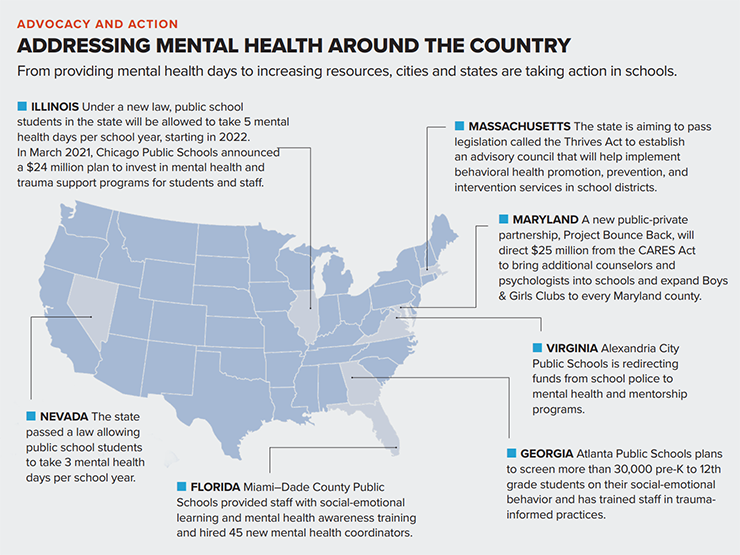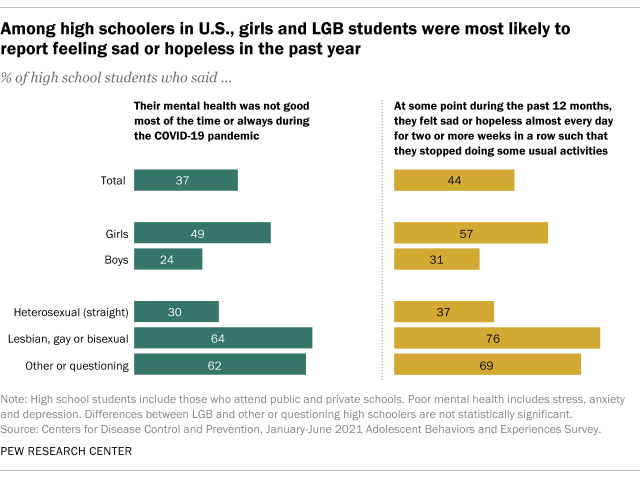Numbers, Please!
Take a moment to look at these statistics and findings about mental health among school-aged people.
The references will be listed on the References link at the bottom of the page.
Early childhood marks a point where children may be developing mental, behavioral, and developmental disorders. 17.4% of US children aged 2-8 years old had been diagnosed with a mental, behavioral, or developmental disorder. (CDC, n.d.)

The COVID-19 pandemic has been linked to increased disparities in the amount of mental health services within schools. Students with lower socioeconomic status tended to have “lower rates of counselors and school psychologists in their districts” (Abramson, 2022).

Teachers who do practice mental health in their classrooms often do not have the time to focus on their primary role as an instructor; the select mental health workers had only provided a sliver of such services, which serves as a concern since mental health professionals are supposed to be the ones supporting student mental health. (Sanchez et al., 2018)
Clinic-based treatment is often inaccessible to families who do not have the privilege of getting affordable health care. (Sanchez et al., 2018)
High school students face mental health struggles as well, with 37% reporting that their mental health was bad during the COVID-19 pandemic. Some students had also reported feeling sad or hopeless “almost every day for at least two weeks in a row” (Schaeffer, 2022), coming in at 44%.
In comparison to their heterosexual peers, LGB high school students reported at 64% that their mental health was struggling, and 76% said they felt sad or hopeless for at least two weeks in a row. (Shaeffer, 2022)
About 25% of BIPOC students have reported cases of “chronic absenteeism” as compared to 14% of White students. Out-of-school discipline has disproportionately affected BIPOC students, therefore leading to other strategies such as whole-school strategies like “social emotional learning supports and referrals for students and families.” (Kataoka, 2021)
LGBTQIA+ students face higher rates of poor mental health. With the rise of anti-transgender legislation, it is becoming increasingly hard to incorporate gender-inclusive facilities, language, and housing for these students to feel safe. (Carrasco, 2021)
Most LGBTQIA+ youth cannot access mental health care, so affirming schools play a big role in keeping these students safe. The Trevor Project has found that LGBTQIA+ students within affirming schools “report better mental health outcomes and lower rates of attempting suicide.” But not all school districts cannot provide these services because of a shortage of health care professionals who practice in school settings. (Langreo, 2023)
This issue is not only in the US. Researchers in Pakistan have analyzed the effects of the pandemic on children there, emphasizing the importance of universal approaches as the toxic stress and deprivation in multiple areas pose as a concern. (Hamoda et al., 2021)
